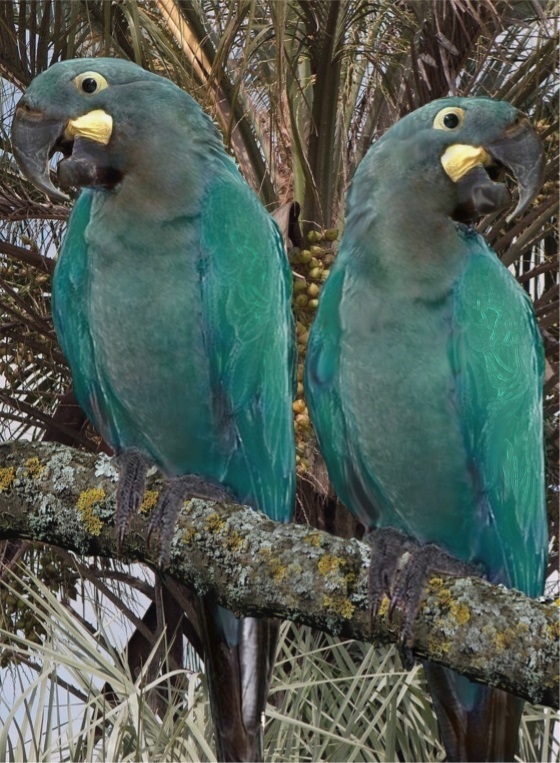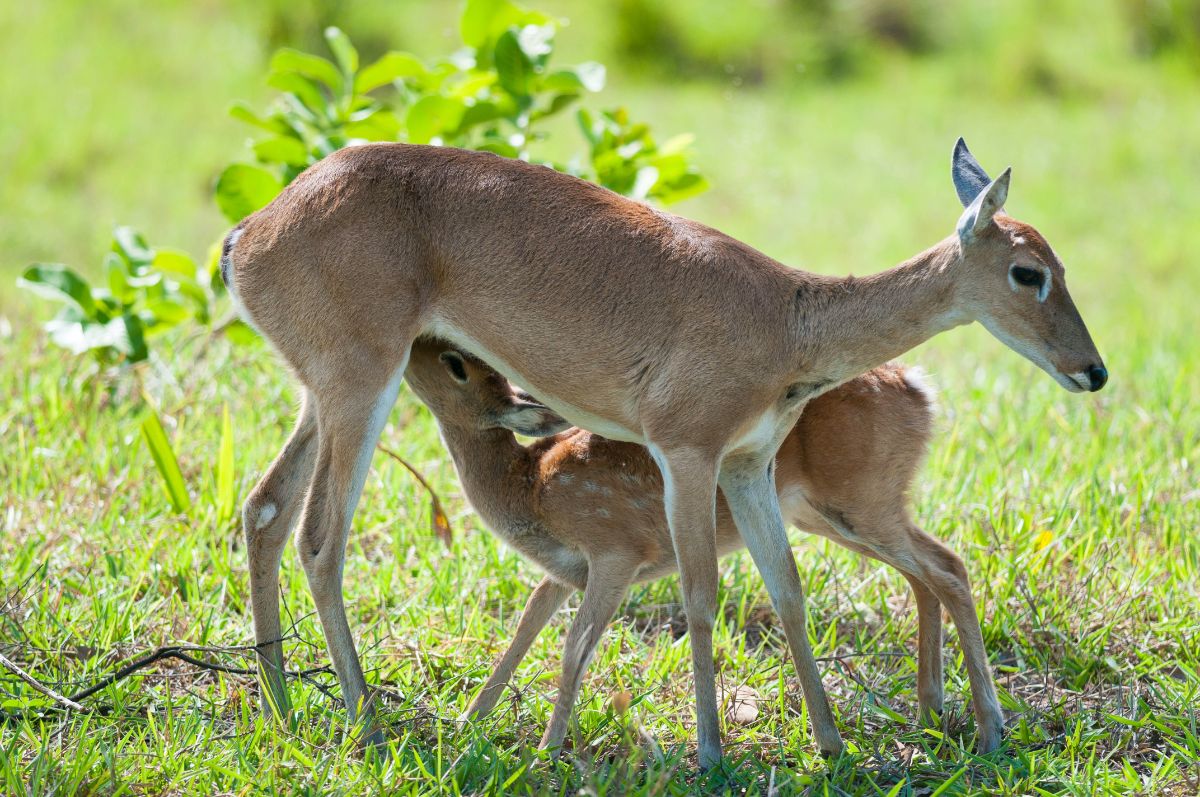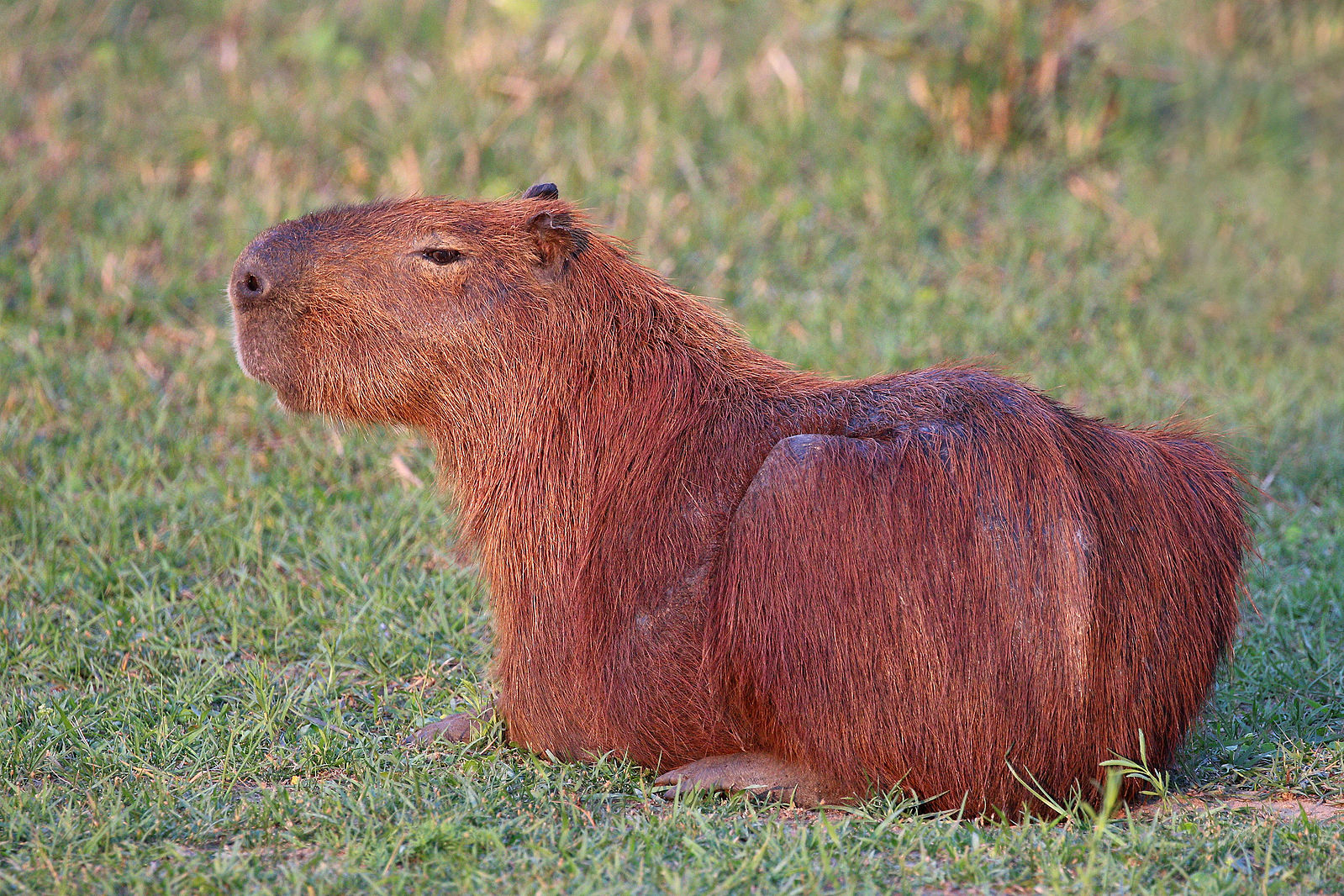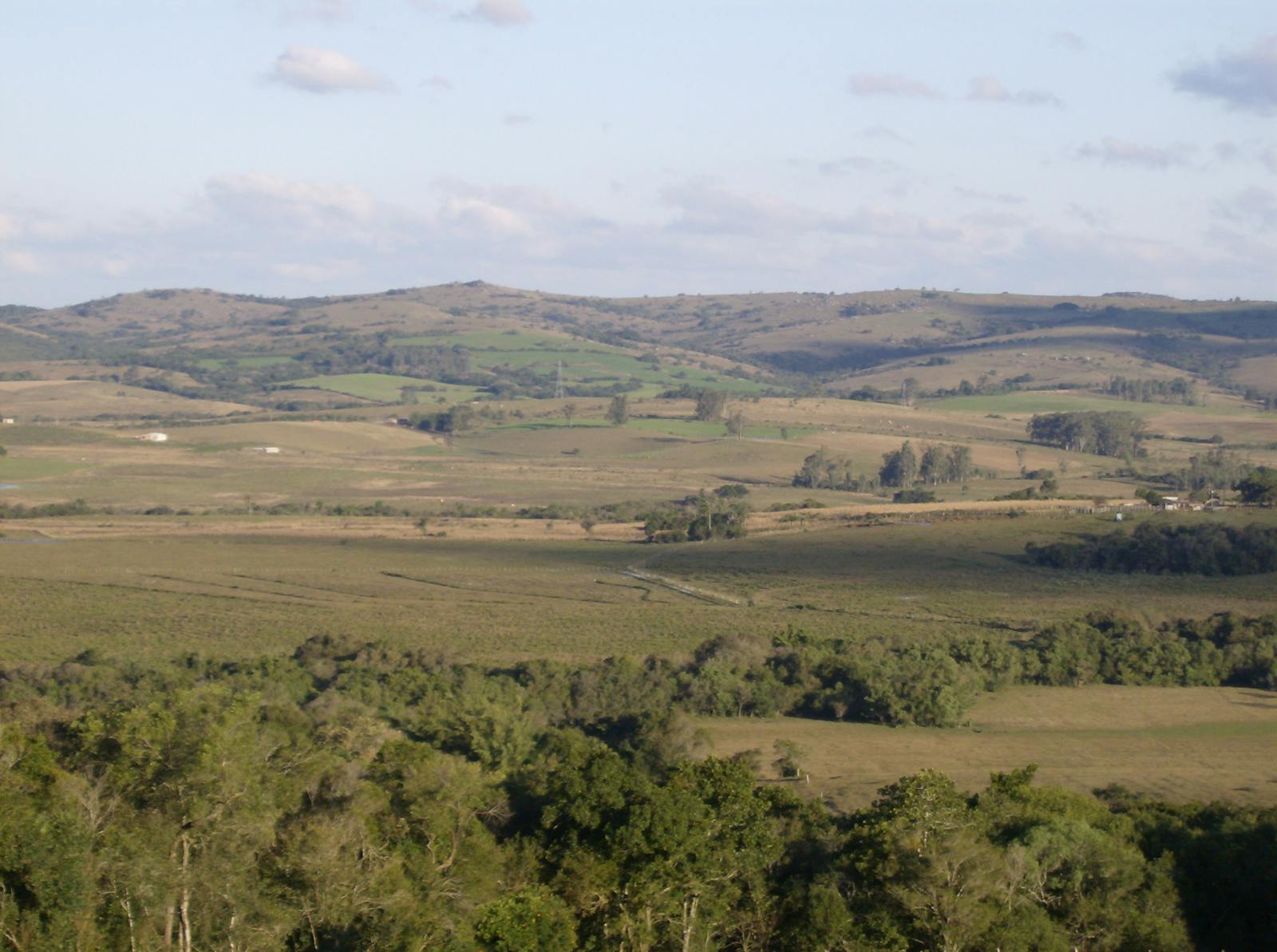Uruguayan Savanna
The ecoregion’s land area is provided in units of 1,000 hectares. The conservation target is the Global Safety Net (GSN1) area for the given ecoregion. The protection level indicates the percentage of the GSN goal that is currently protected on a scale of 0-10. N/A means data is not available at this time.
Bioregion: Rio de la Plata Grasslands (NT3)
Realm: Southern America
Ecoregion Size (1000 ha):
35,357
Ecoregion ID:
574
Conservation Target:
34%
Protection Level:
1
States: Uruguay, Brazil, Argentina
The critically endangered glaucous macaw prefers savanna habitat intermingled with palm “islands” and bands of riparian forest along the river systems in the Uruguayan Savanna ecoregion. The glaucous macaw, so named for its light bluish-gray or bluish-white color, has a bill well adapted to consuming palm nuts, especially yatay palm.
The large blue bird’s remaining population is thought to be less than 50 and without recent sighting potentially extinct. The large macaws are important seed dispersers for yatay and other palms, and are a critical part of this fragile ecosystem. We can only hope that someone will spot their turquoise silhouettes and loud calls flying between palm “islands” in the Uruguayan Savanna.

The flagship species of the Uruguayan Savanna ecoregion is the glaucous macaw. Image credit: Wikimedia Commons
The Uruguayan Savanna ecoregion extends from the extreme southern part of the Rio Grande do Sul, a Brazilian state, to include the entire country of Uruguay, and a small section of the Argentinean province of Entre Ríos. These savannas encompass a mosaic of gallery forests, palm savannas, and out cropping of submontane forests.
The galley forests are found along rivers in the easternmost sections. The submontane forests and palm savannas are scattered throughout the region. Annual precipitation in the area ranges from 1,000 mm in the south to 1,300 mm in the north. The average temperature ranges from 16ºC in the south to 19ºC in the north. The ecoregion is relatively flat, ranging from sea-level to elevations of about 500 m in some areas.
The majority of the ecoregion includes medium-tall grasslands. There are around 400 species of annual and perennial grasses. The most common include dallisgrass, St. Augustine, Astrida spp., Bromus spp., and Paspalum spp.. In northern sandy soil areas Andropogon lateralis is the dominant grass. Main tree species in the gallery forest include Humboldt’s willow and Ruprenchtia salicifolia. Common palm species include queen, caranday, Copernicia australis, Acromia totati, and the near-endemic yatay palm.

Pampas deer nursing fawn. Image credit: Scott Presnell, Creative Commons
Seventy-two species of mammals occur in this ecoregion including 4 marsupials, 17 bats, 5 placental mammals,17 carnivores, 2 even-toed hoofed mammals, and 20 rodents. Native mammals include capybara, pampas deer, and brown brocket deer. Most of the mammals from this ecoregion are found in the gallery forests along the Uruguay River and in the small ravines in the north. Only 80 species of birds inhabit the savannas. Of note are greater rhea, the vulnerable ochre-breasted pipit and saffron-cowled blackbird, and the endangered yellow cardinal.
The savannas are critically endangered with only a few small isolated patches of intact habitat remaining. The whole ecoregion has been severely altered by cattle ranching, which is one of the main pillars of the national economy in Uruguay. The Uruguayan government identified 36 areas for wildlife protection, although the current status of the national parks is poor.
There are 15 protected areas that have been highly degraded and are not adequate for the protection of native species. There are also areas that are not only failing to protect the native fauna and flora in the ecoregion but also introducing new species, such as the eucalyptus in Roosevelt National Park, which have become dominant.

Capybara. Image credit: Courtesy of Charles J. Sharp
Continuous excessive grazing by livestock and the conversion of natural habitats for agriculture threaten the few remaining isolated patches of grasslands and forests. About 80% of Uruguayan territory is used for cattle ranching on natural and artificial savannas. Historically the palm savannas extended much further throughout the ecoregion but livestock grazing, especially on young palm, has significantly reduced their coverage.
Habitat destruction and modification, and introduction of alien species to the ecoregion have caused local extinctions of collared peccary, giant anteater, tamandua, jaguar, and jaguarundi. Soil erosion from agriculture activities is one of the major threats. The western portion of the ecoregion is threatened by logging.
The priority conservation actions for the next decade are to: 1) restrict cattle-ranching range and encourage more sustainable grazing methods; 2) improve management capacity and effectiveness of the protected areas; and 3) integrate natural resource management into agricultural practices.
Citations
1. Locklin, C. 2018. Southeastern South America: Uruguay, Brazil, and Argentina. https://www.worldwildlife.org/ecoregions/nt0710 Accessed November 28, 2018
2. Republica Oriental del Uruguay, OEA, and BID. 1992. Estudio Ambiental Nacional: Plan de Accion Ambiental. Organizacion de los Estados Americanos, Washington, DC.
3. Gudynas, E. 2000. Preservando Nuestras Areas Naturales. http://www.ambiental.net/ecouruguay/APtgdsPosData.html. Accessed 2001.
4. BirdLife International 2016. Anodorhynchus glaucus. The IUCN Red List of Threatened Species 2016: e.T22685527A93078084. http://dx.doi.org/10.2305/IUCN.UK.2016-3.RLTS.T22685527A93078084.en. Accessed November 28, 2018.



